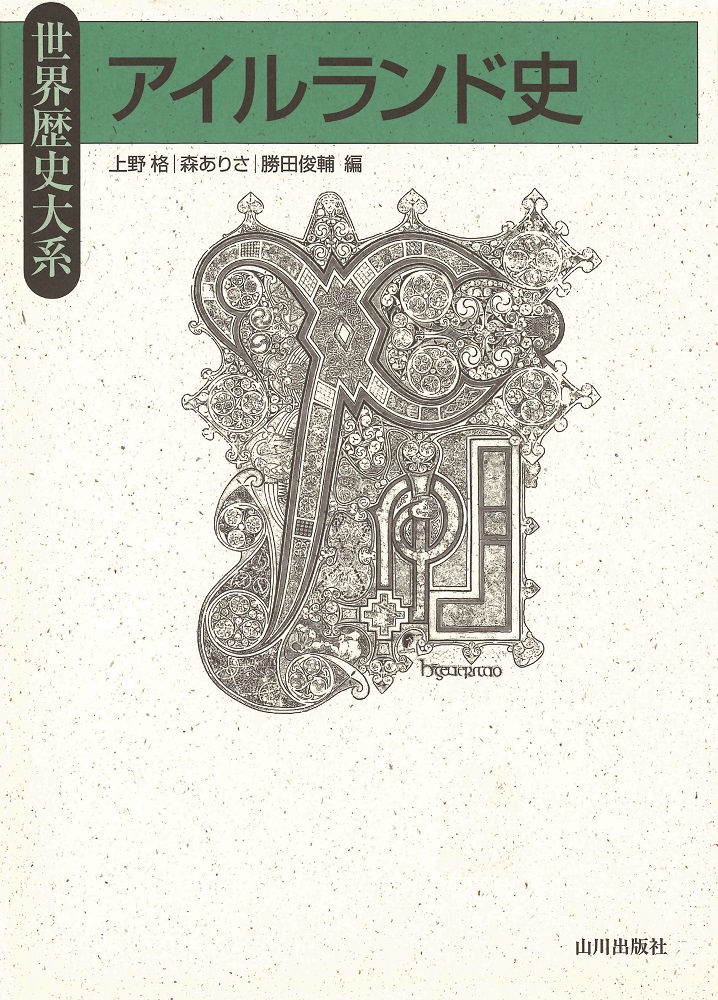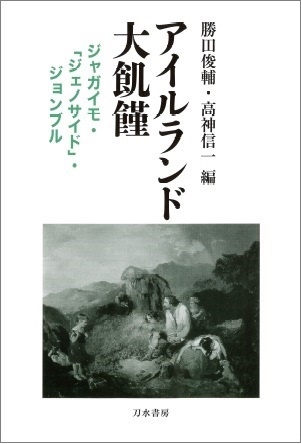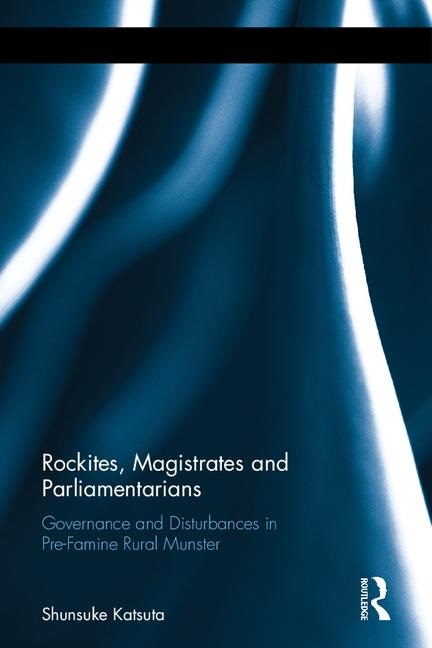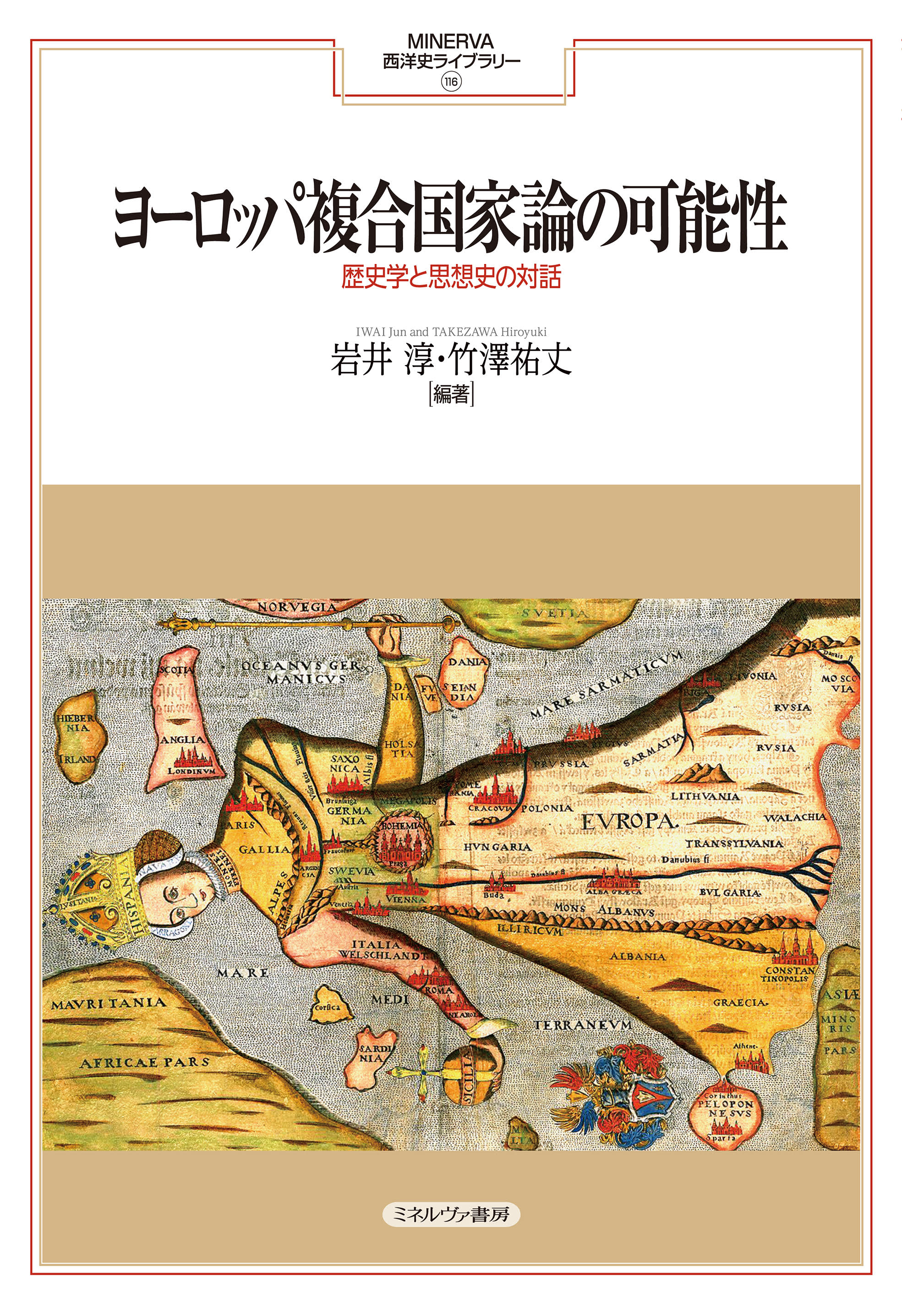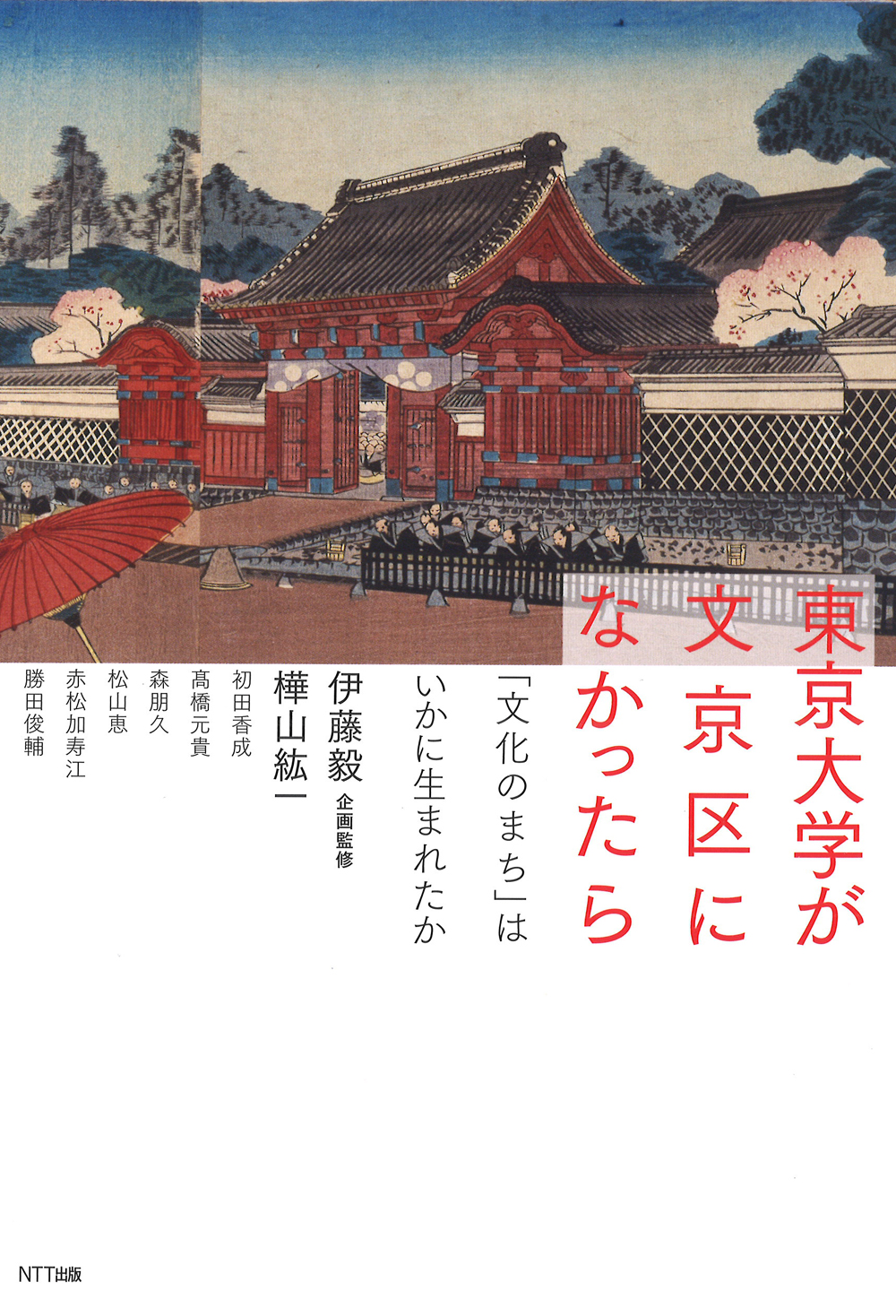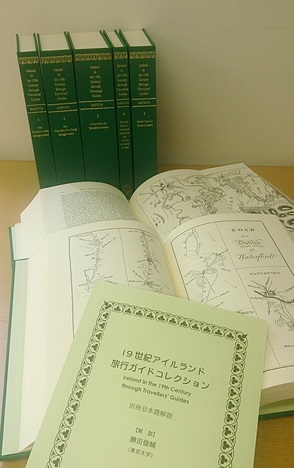
Title
Ireland in the 19th century through travellers’ guides
Size
approx. 2,400 pages (total of 5 volume) with lots of maps and illustrations
Language
English
Released
June, 2015
ISBN
978-4-902454-90-1
Published by
Eureka Press
Book Info
See Book Availability at Library
Japanese Page
Consisting of five Ireland-travel guides carefully selected from among the many published in the 19th century, this collection of Ireland-travel guides is noteworthy for various reasons. First, while these guides were written mainly for travelers from Britain, they all extend to hundreds of pages and include not only practical travel information such as the prices of goods, means of transportation, descriptions of post stations, and places of scenic and historical interest, but also observations on and images of Irish society at the time. In other words, for today’s historians, they can serve as a useful and interesting historical record of Irish society in the 19th century.
When this collection is used as a historical record, what we notice is the spatial diversity of Ireland and that forms the second point of advantage of this collection. While travel guides do emphasize regional differences, it is particularly significant in the case of Ireland because, aside from differences in natural conditions, the country was conquered and colonized by England and Scotland several times from the 12th century onwards. For this reason, considerably different societies were formed in the northern and eastern parts close to Great Britain compared to those formed in the distant southern and western parts. Furthermore, regional differences were spurred with the advance of industrialization in the north in the 19th century.
Third, this collection is also eloquent with respect to changes over time, tracing major social changes that took place during the 19th century. For example, Ireland transitioned from an overly populated society in the first half of the century to a society suffering from population decline by the end of the century; the main countryside sceneries also changed from wheat and potato fields to cattle and sheep gracefully grazing in pastures. Importantly, this collection contains travel guides from just before and after the Great Irish Potato Famine mid-century, and provides information on the shocking realities (and myths) of the Great Famine.
Fourth, the collection is also insightful regarding the issue of the complex identities of the United Kingdom. People in England and Scotland in the 19th century did not view Irish people, who were supposed to belong to the same state (the UK), as compatriots; in fact, they sometimes even created their own identities by stressing upon the differences between them and the Irish. Travelers were the ones with the strongest tendency to see the Irish as internal outsiders. In this sense, this collection can be considered as a historical record of both Britain and Ireland in the 19th century. Please note that this collection is accompanied by a separate commentary booklet (14 pages) by the editor.
(Written by KATSUTA Shunsuke, Associate Professor, Graduate School of Humanities and Sociology / 2018)
Table of Contents
The Travellers Guide through Ireland/ or, a Topographical Description of that Kingdom
Rev. Jo. Robertson
Edinburgh & London: Denham & Dick - Vernon, Hood, and Sharp, 1806, c.350 pp., incl. a fold-out, hand-coloured map.
Volume 2:
The Traveller's New Guide through Ireland
London: Longman, Hurst, Rees, Orme, and Brown, 1815, c. 580 pp. incl. a fold-out map
Volume 3:
A Hand Book for Travellers in Ireland, Descriptive of Its Scenery, Towns, Seats, Antiquities, etc., with Various Statistical Tables…
James Fraser
Dublin: William Curry, 1844, c. 748 pp., incl. a fold-out map
Volume 4:
The Irish Tourist's Illustrated Handbook for Visitors to Ireland in 1852, 2nd ed.
London: Office of the National Illustrated Library, 1852, c.200 pp., incl. 3 fold-out maps
Volume 5:
Black's Tourist's Guide to Ireland, 19th ed.
Edinburgh: Adam & Charles Black, 1886, c. 478 pp. incl. 4 fold-out maps



 Find a book
Find a book


